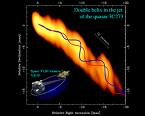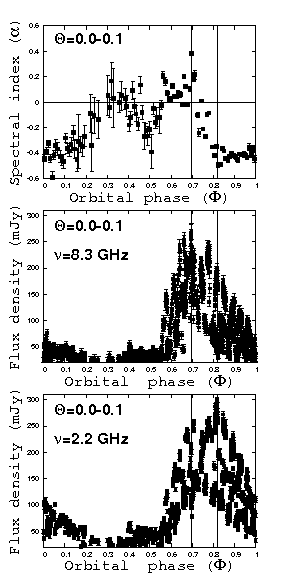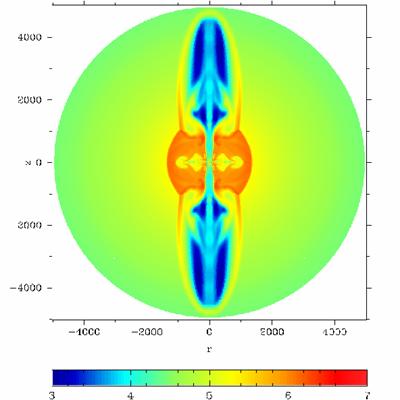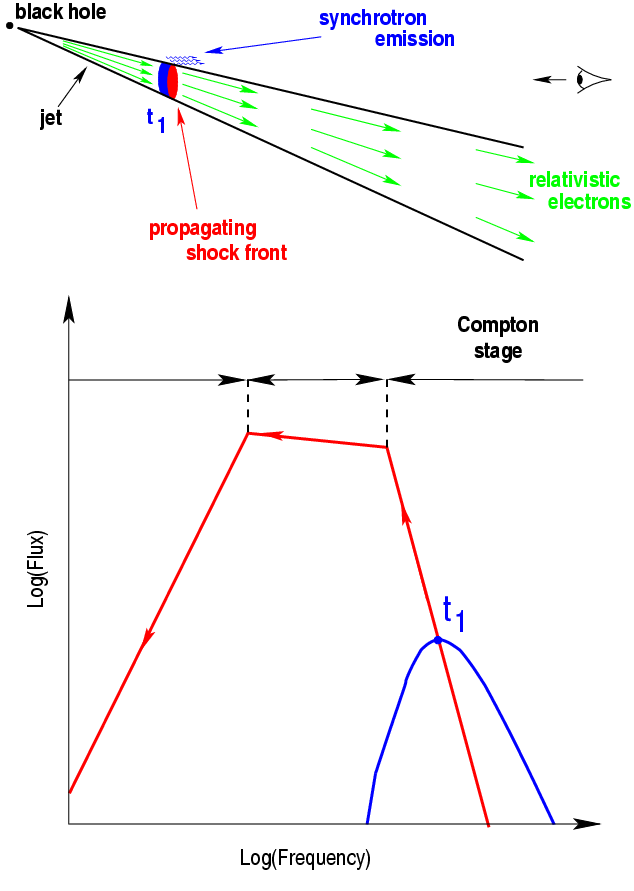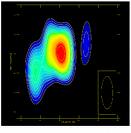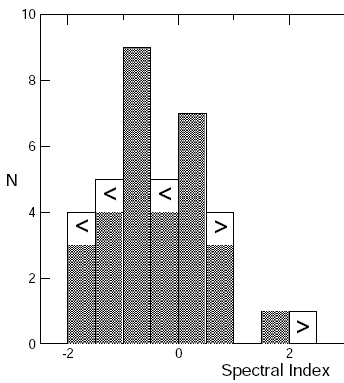Steady Jets and Transient Jets
Characteristics and Relationship


Max-Planck-Institut für Radioastronomie
Bonn, Germany
7 - 8 April 2010
Travel Accomodation Participants Program Presenter instructions Proceedings Conference Photos Poster
Scientific Rationale
Jets are a common
phenomenon in accreting compact objects, both Galactic and
extragalactic, and results of the last years show that there exist two
types of jets with completely different characteristics. The first type
of jet is a result of magneto-rotational processes within an optically
thick (flat or inverted spectrum) radio core region, from which emerges
a quasi-steady slowly moving jet, with Kelvin-Helmholtz instabilities
dominating its morphology and dynamics that are best seen in AGNs. The
second type of jet is a result of internal shocks, producing a
transient jet which features a sequence of bright and typically
optically thin regions that move at superluminal speeds, embedded in
the structural patterns produced by instabilities in the underlying
flow. These two types are called "steady" vs "transient" jet in the
microquasar community and "underlying" vs "shocked" jet in the AGN
community. X-ray observations of microquasars show that the steady jet
is taking place in the 'low / hard' X-ray state and the transient jet
in the 'steep power-law' X-ray state. That means that the two radio
states correspond to two different X-ray states. The connection, if
any, between the two types of jets continues to challenge observers and
theoreticians. Latest results show a possible relationship: internal
shocks form when an event like a disk instability or magnetic
reconnection creates a faster jet that catches up with the previously
generated slowly moving steady jet.
The aim of this workshop is to review the current status of the
knowledge about steady and transient jets in various environments,
like microquasars, AGN and gamma-ray bursts and to spotlight
existing discrepancies/analogies in a fruitful interchange between
the members of the different communities. An important goal is to
identify the connection between steady jets and transient jets.
The conference will consist of the following sessions:
-
JET OBSERVATIONS
-
MHD STEADY JET PRODUCTION AND SHOCK-IN-JET THEORY
-
JETS AND HIGH-ENERGY EMISSION
In addition to four invited review talks (30 min) per session, contributed papers can be presented in the form of a short-talk (5 min) accompanied by a poster. Ample of time will be dedicated to the poster session.
Review topics and invited speakers
SESSION I: JET OBSERVATIONS
1.1 Microquasars, AGN and gamma-ray bursts
jets: topical questions - F.
Mirabel
(CEA Saclay)
1.2 Steady jet and transient
jets
radio/X-ray characteristics - M. Massi
(MPIfR Bonn)
1.3 Quasi-stationary and transitory
patterns in
jets - A.
Lobanov (MPIfR Bonn)
SESSION II: MHD STEADY JET PRODUCTION AND SHOCK-IN-JET THEORY
2.1 Steady jet generation / magnetic acceleration
of jets - S.
Komissarov (University of Leeds)
2.2 Shock-in-jet
model for quasars and
microquasars - M. Türler (University
of Geneva)
2.3 Formation of MHD jets and flares as trigger of
internal shocks -
C.
Fendt (MPIA Heidelberg)
2.4 New evidence for extreme particle
acceleration in microquasars
- M. Tavani (INAF-IASF
Roma)
SESSION III:
JETS AND HIGH-ENERGY EMISSION
3.1 Correlation between X-ray and gamma-ray emission
in TeV blazars - K. Katarzynski (Univ.of
Torun)
3.2 Radio jets and
high energy emission in microquasars - J.M.
Paredes
(University of Barcelona)
3.3 Spectral energy distribution of gamma-ray binaries -
V. Bosch-Ramon (MPIfK Heidelberg)
3.4
Concluding remarks
Scientific Organizing Committee
Serguei
Komissarov (University of Leeds), Andrei Lobanov
(MPIfR), Maria
Massi (MPIfR, chair), Josep
M. Paredes (University of Barcelona), Alan Roy
(MPIfR), Marc Türler
(University of Geneva)
Local Organizing Committee: Edith Fingas, Christian Fromm, Hedwig
Kalisch, Andrei Lobanov, Maria Massi,
Alan Roy, Lisa
Zimmermann
Conference Venue
The Conference will be held at the Max-Planck-Institut fuer Radioastronomie in Bonn. The institute is just a few km away from the city center and can be conveniently reached by public transportation (see the Travel link).
Proceedings
We will publish the conference proceedings in
"Memorie della Societa Astronomica Italiana" (Journal of the Italian
Astronomical Society)
Timeline
Please make your own hotel reservation
as soon as possible.
Please read the Presenter Instructions and send us your presentation before the conference
